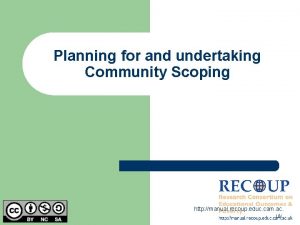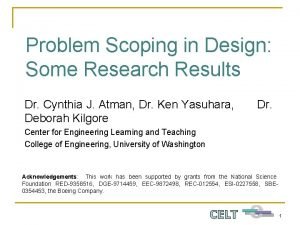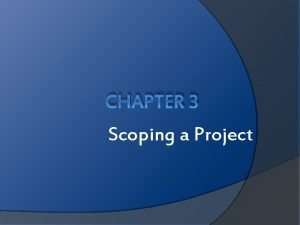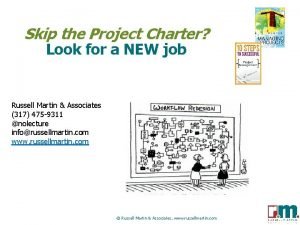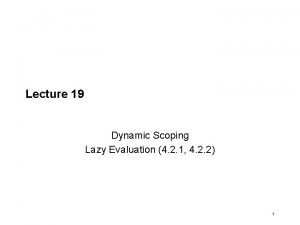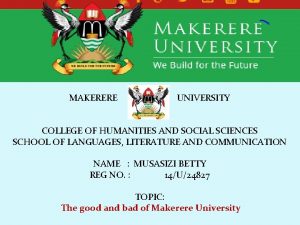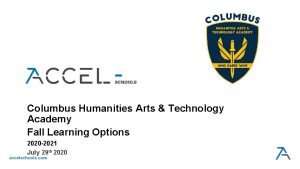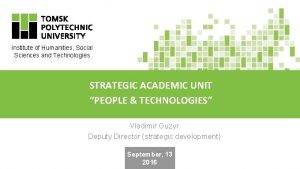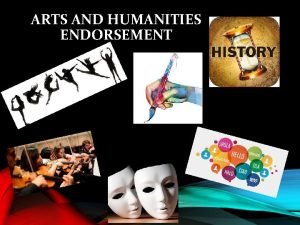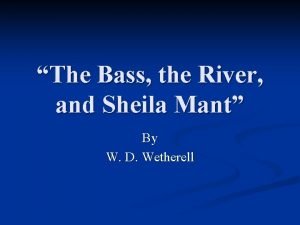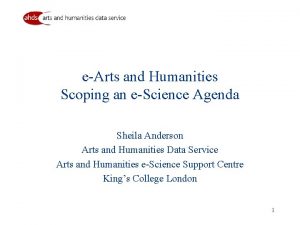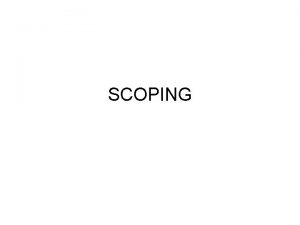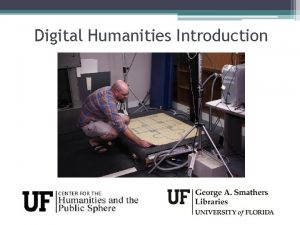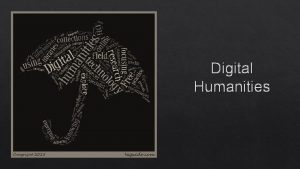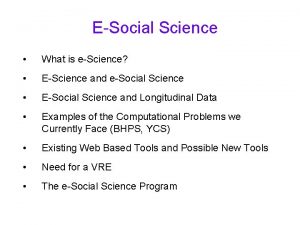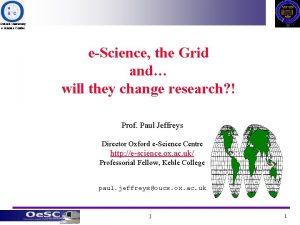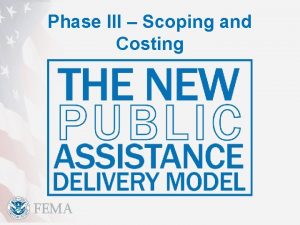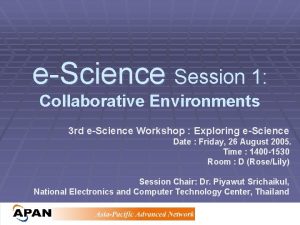eArts and Humanities Scoping an eScience Agenda Sheila











- Slides: 11

e-Arts and Humanities Scoping an e-Science Agenda Sheila Anderson Arts and Humanities Data Service King’s College London 1

e-Arts and Humanities • e-Science is about an enabling infrastructure – tools , technologies, computing power etc. – supporting research • We have defined it as: the development and deployment of a networked infrastructure and culture through which resources – be they processing power, data, expertise, or person power – can be shared in a secure environment, and in which new forms of collaboration can emerge, and new and advanced methodologies explored 2

Aims and Objectives • Raise awareness and understanding of escience, and how e-science might relate to and support the different disciplines within the arts and humanities • Enable scholars engaging with ICT in their research practice to find about and take advantage of the outputs and tools arising from the e-science and e-social science programmes • Assist the AHRC in the development of an arts and humanities e-Science research 3 agenda

The Scoping Survey • Scoping survey methodology – Identify, collate and analyse information on escience technologies, projects and outputs – Match these against methods and challenges for research practice in the arts and humanities – this done through a series of expert seminars – Dissemination to a wider community for comment and to raise awareness – Create an on-line information base for consultation by arts and humanities scholars 4

Expert Seminars key to this process • Exchange ideas and knowledge • Identify use of ICT in research practice and ‘grand challenges and opportunities’ • Identify e-Science potential • Identify priority areas for research and practice • Recommendations for future action – Priorities for research – Priorities for tools development 5

Based around subject domain • • Library and Information Studies – Melissa Terras Archaeology – William Kilbride Literary and Textual Studies – Peter Robinson History – Mark Greengrass Visual Arts – Sue Gollifer Performing Arts – Angela Picini Linguistics and Languages – Paul Rayson 6

Format of the Seminars • • Driven from research needs and research practice Identify ICT use Identify ‘Grand Challenges’ Identify where e-Science might help address the grand challenges • Identify needs, priorities, and recommendations • Wish list – tools and projects 7

Outputs • Report from each seminar – circulated more widely for comment and suggestions • Final report drawing out common themes and priorities and unique requirements • On-line information resource as part of AHe. SSC – maintained and updated • Draft report end July • Final report mid-August 8

Early thoughts • Must come from, and be embedded in, research practice and research needs • Be innovative and push barriers • BUT, be sensitive to those less engaged • Re-imagine the concept of ‘e-Science’ (and even the name); challenge existing e. Science technologies • International, scalable, sustainable 9

Early thoughts • Content: – Highly dispersed content joined up through the grid and appropriate tools – ontology connectors – Deep mining (inc. image and sound) using different methods – deep log analysis for connecting; folksonomies; data and text mining – Large scale images, moving images, sound, etc. managed and accessed through the grid – Capturing the creative process – Annotation, collation, visualisation, simulation – Content from across disciplines 10

Early thoughts • Collaboration: – – – Strong possibilities New forms of critical editions New forms of curation Democratisation Dynamic, interactive BUT secure and trusted provenance – Push the access grid further for collaborative research and teaching – Across disciplines 11
 How do you undertake community scoping
How do you undertake community scoping What is problem scoping
What is problem scoping Project scoping exercise
Project scoping exercise Skip this
Skip this Dynamic scoping
Dynamic scoping Agenda sistemica y agenda institucional
Agenda sistemica y agenda institucional College of humanities and social sciences
College of humanities and social sciences Columbus humanities arts and technology academy
Columbus humanities arts and technology academy Arts and humanities endorsement
Arts and humanities endorsement Humanities and social sciences
Humanities and social sciences Arts and humanities endorsement
Arts and humanities endorsement The bass the river and sheila mant point of view
The bass the river and sheila mant point of view
